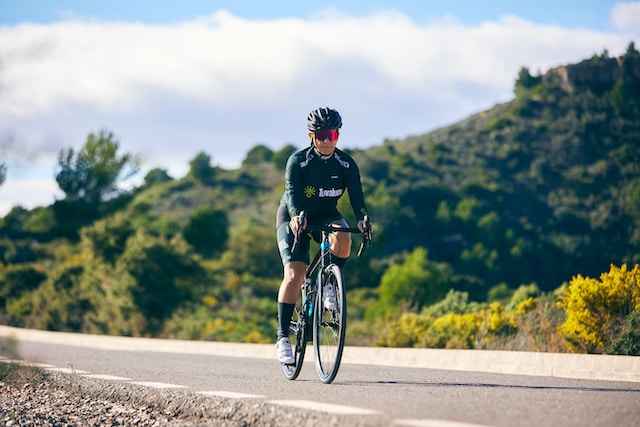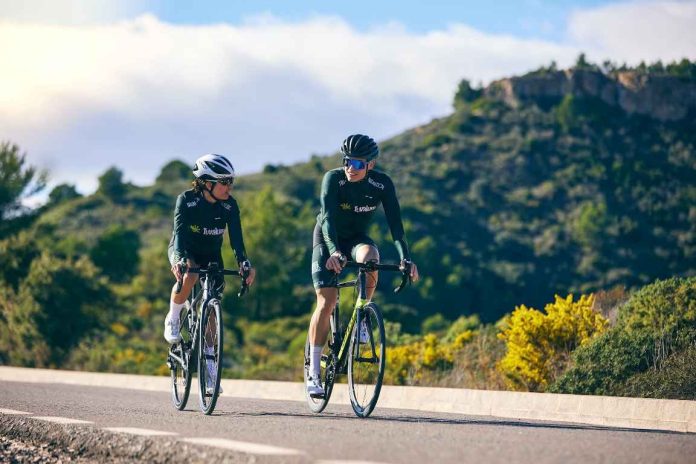Dual carriageways are roads that are separated by a continuous central reservation. They don’t have two lanes in each direction always rather there might be one or three. They are designed for higher volumes of traffic, generally moving at heist speed, unlike motorways.
It is legal to cycle on these roads but that depends on where you are going. You can get nervous on dual carriage roads because of the higher traffic. You can travel up to 70mph. the traffic on the dual carriage roads is not going much quicker.
Here, in this guide, we are going to provide some of the dos and Don’ts of cycling on dual carriageways in England. If you are a cyclist in England, hope these useful tips will be helpful to you.
Table of Contents
The dos and don’ts of cycling in England on dual carriageways:
#1. Rule 59:
Clothing:
You must avoid outfits that can get tangled in the chains, or in the wheel, or become obstacles to your lights when you are cycling. You can use light-coloured or fluorescent-coloured clothing as it will help other road users to see you in daylight as well as in poor light.
Your clothing reflection including the accessories such as a belt, arm, or ankle band can increase your visibility into the dark.
Also, you must wear a cycle helmet that conforms to the recent UK regulations. Researchers stated that a well-fitted helmet will help you to reduce your risk of sustaining a head injury in certain circumstances.
#2. Rule 60:
At night, your cycle must have white front and red rear lights lit. these lights must also be fitted with a red rear reflector. White spoke reflectors and front reflectors help you to be seen at night. Flashing lights are permissible but according to the law, it is recommended that if you are cycling in areas without street lighting needs to use a steady front lamp.
#3. Rule 61:

Cycle routes and other facilities:
The cycle lines in the UK are marked by white lines along the carriage. You can use facilities such as cycle lanes and tracks, toucan crossings, and advanced stop lines. These facilities will make your journey safer and easier.
But these will depend on your skills and experience on how you can enjoy these facilities on your ride and also upon the situation. These facilities are provided for the safety of your journey, you can exercise your judgment and are not obligated to use them.
#4. Rule 62:
Cycle tracks:
These cycle tracks are created for cyclists that are secured and located away from motor traffic. Cycle tracks may run alongside the pavements and can be separated through some features such as a change of material, a white line, or a verge. You must keep the side intended for cyclists because the pedestrian side remains a footpath or pavement.
But, some of the cycle tracks are not separated through such features and these tracks are shared with pedestrians. You must be very careful while passing through pedestrians. You need to put extra attention, especially to the children, orderly or disabled people. You must provide them with plenty of room. Always you must be prepared for slowing down and stop if necessary.
#5. Rule 63:
Sharing space for pedestrians and horse-drawn vehicles:
While you are sharing the cycle track with the pedestrians then in the track horses, and horse-drawn vehicles are also permitted. You must be very careful while passing pedestrians. You need to slow down and stop if necessary. You must let them know that you are on the track.
You must not pass the pedestrian, horses, or horse-drawn vehicles at a high speed and very closely. You must maintain a distance from them. You must not pass a horse on their left. You should keep in mind that horses can be startled if you pass through without warning.
#6. Rule 66:
You should:
- You must avoid any action that can eliminate your controlling power on your cycle.
- You must be very considerate of the other road users if you are riding in groups. You can ride two abreast and it can be one of the safety measures to take. It is effective especially if you are a gang of children or you include inexperienced cycle riders.
- You must be aware of the behind drivers and you need to let them overtake them. But, most importantly let them overtake when you feel it is safe to do so.
- You need to be considerate regarding the other road users especially if they are blind and disabled.
#7. Rule 68:
You should not:
- Carry another passenger unless the cycle is built for doing so.
- Hold onto a moving vehicle.
- Ride in a careless, dangerous, and inconsiderate manner.
- Drive under the influence of alcohol, drugs, and adhesive medicine.
- You must not cycle on the pavement.
- You must not cross the stop line when the traffic lights are red.
#8. Rule 72:
Road positioning:
When you are using dual carriageways in England then you must adopt two basic road positions. But it depends upon the situation.
- You need to ride at the centre of the lane to make you as clearly visible on the road as possible in the following situations:
- On quiet roads or streets: If you can realize that there is a very faster vehicle coming up behind you then you must move to the left to enable the drivers to overtake. It is important if you think you can do it safely.
- In slower-moving traffic: If you see that the traffic around you is starting to move more freely then you can move over to the left if you can do it safely. It enables the faster vehicles behind you to overtake.
- At the junctions of various roads or narrower roads, it is possible to let faster vehicles overtake. It will be unsafe for the vehicle drivers to overtake.
- If you are driving on busy roads, and there are plenty of vehicles that move faster than you then you must let them overtake where it is safe. You must keep a distance of 0.5m away from the vehicles. You must keep in mind that traffic on most dual carriages in the UK moves faster. You must take extra care when crossing slip roads.
FAQ:
Can you cycle on the dual carriage in England?
Ans: it is legal to cycle on dual carriage in England. Some states that it is not as safe to cycle on the dual carriage. By taking some safety measures you can ride on the dual carriageways in England. Normally, you will be in the secondary position, perhaps a meter away from the left-hand edge of the left-hand lane.
What are the rules for cycling on the road in the UK?
Ans: Cycling safety tips on the dual carriage roads in the UK are:
- Stay away from the fast-moving vehicles
- Stop at red lights.
- On narrow roads stay central
- Make eye contact
- Always pay attention
- Go slow on the pavement
Conclusion:
Dual carriageways are roads that are divided by a continuous central reservation. So, there will be plenty of other vehicles with high speed. So, you must be very careful while riding on these roads. Here, we have enlisted various dos and don’ts that you should consider while riding on dual carriageways.
Hope, this guide will help you to cycle by putting extra care on yourself and your surroundings. Safety must be a high priority to keep yourself and others harmless during the journey. Enjoy your ride!














